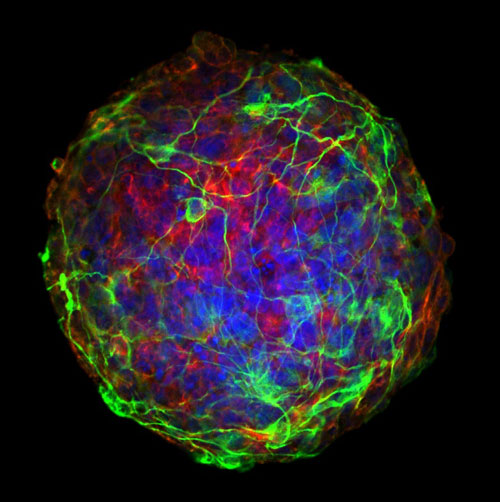Shelley Halpain
Research
Dr. Halpain’s research concerns the molecular basis for neural development. Her laboratory uses advanced light microscopy and quantitative cellular imaging methods to investigate neurite outgrowth and synapse formation. The lab also develops automated, high-content screening assays of neuronal morphology for use in drug discovery and identification of novel signaling pathways. Proteomics analyses are used to investigate key players in neuritogenesis. A particular focus is the role that cytoskeletal proteins, especially microtubules and actin filaments, play in establishing and maintaining neuronal networks. The laboratory's work is fundamentally relevant to many brain disorders, ranging from Alzheimer’s disease to mood disorders and autism.

Select Publications
- Dehmelt, L., Smart, F., Ozer, R., and Halpain, S. (2003) The role of MAP2c in the reorganization of microtubules and lamellipodia during neurite initiation, J. Neuroscienc, 23:9479-9490.
- Roger, B., Al-Bassam, J., Dehmelt, L., Milligan, R., and Halpain, S. (2004) MAP2c, but not tau, binds and bundles F-actin via its microtubule binding domain. Current Biology 14:363-371.
- Calabrese, B. and Halpain, S. (2005) Essential role for the PKC target MARCKS in maintaining dendritic spine morphology. Neuron 48:77-90.
- Calabrese, B., Wilson, M., and Halpain, S. (2006) Development and regulation of dendritic spine synapses. Physiology 21:38-47.
- Dehmelt, L., Nalbant, P., Steffan, W., and Halpain, S. (2006) A microtubule-based, dynein-dependent force induces local cell protrusions: implications for neurite initiation. Brain Cell Biology 35:43-60.
- Al-Bassam, J., Roger, B., Halpain, S., and Milligan, R.A. (2007) Analysis of the weak interactions of ADP-Unc104 and ADP-Kinesin with microtubules and their inhibition by MAP2c. Cell Motil. Cytoskeleton 64(5):377-389.
- Calabrese, B., Shaked, G.M., Tabarean IV, Braga, J., Koo, E.H., and Halpain, S. (2007) Rapid, concurrent alterations in pre- and postsynaptic structure induced by naturally-secreted amyloid-beta protein. Molecular Cell Neuroscience 35:183-193.
Biography
Shelley Halpain received her B.S. in Biological Sciences at The University of California Irvine, and her Ph.D. in Neuroscience from the Rockefeller University. Her postdoctoral training was under Professor Paul Greengard, a 2001 Nobel laureate in Physiology or Medicine. Dr. Halpain was on the faculty at the University of Virginia Health Sciences Center 1992-1996, then at The Scripps Research Institute 1996-2007. She became Professor in the School of Biological Sciences at UCSD in 2007. Dr. Halpain served as Council Delegate for the AAAS Section on Neuroscience from 1998-2000, is a member of national and international scientific review panels, and is a frequent contributor of reviews and commentary for international science journals. Professor Halpain's research has been published in top scientific journals and has been featured in National Geographic magazine.

